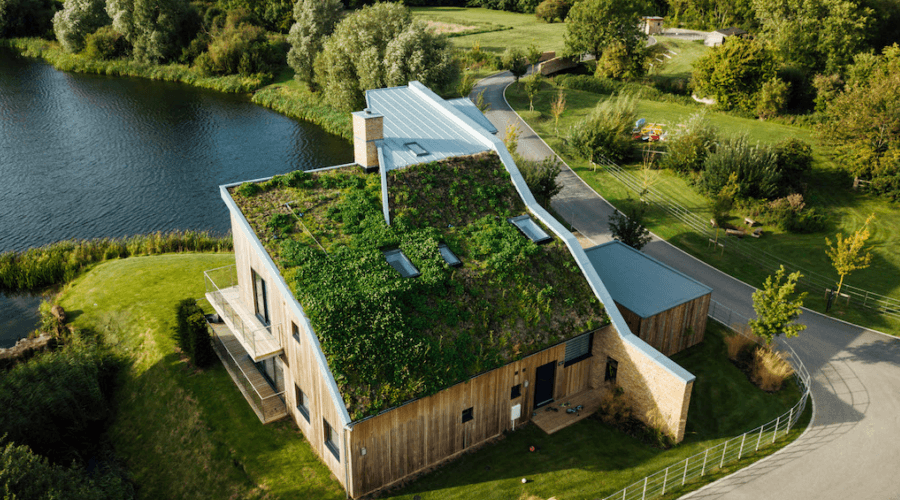As homeowners become more conscious of sustainability and rising energy costs, eco-friendly home renovations are gaining popularity. Whether you want to lower utility bills, reduce your carbon footprint, or increase property value, green upgrades offer significant long-term benefits. In this guide, we’ll explore the best eco-friendly renovations that will help you save money and energy in 2025.
1. Solar Panel Installation
Investing in solar panels is one of the best ways to cut energy costs and decrease reliance on traditional power sources. With advancements in photovoltaic technology, solar panels have become more efficient and affordable. Many governments offer tax incentives, rebates, and net metering programs, making solar energy a cost-effective and sustainable investment for homeowners.
Key Benefits:
- Reduces electricity bills significantly
- Increases home resale value
- Lowers carbon footprint
2. Energy-Efficient Windows & Doors
Upgrading to energy-efficient windows and doors can prevent heat loss during winter and keep your home cooler in the summer. Look for double or triple-pane windows with low-emissivity (Low-E) coatings and insulated frames to improve energy efficiency.
Key Benefits:
- Reduces heating and cooling costs
- Improves indoor comfort levels
- Blocks harmful UV rays, protecting furniture and flooring
3. Smart Thermostats
Smart thermostats learn your habits and adjust temperature settings accordingly to optimize energy usage. Many models connect to your smartphone, allowing remote temperature control and energy tracking. By upgrading to a smart thermostat, you can reduce heating and cooling costs without sacrificing comfort.
Key Benefits:
- Lowers energy consumption by up to 20%
- Provides remote access via smartphone apps
- Increases HVAC system efficiency
4. Insulation Upgrades
Proper insulation is essential for maintaining a comfortable indoor temperature year-round. Replacing outdated insulation with eco-friendly materials like recycled denim, cellulose, or spray foam can significantly cut heating and cooling costs.
Key Benefits:
- Reduces energy waste
- Lowers utility bills
- Enhances indoor air quality
5. Rainwater Harvesting Systems
Rainwater harvesting allows you to collect and store rainwater for non-potable uses such as watering gardens, flushing toilets, and washing clothes. Installing a rainwater collection system can help conserve water and reduce dependence on municipal supply.
Key Benefits:
- Decreases water bills
- Provides an alternative water source during droughts
- Promotes sustainable water management
6. LED Lighting Upgrades
Replacing incandescent bulbs with LED lighting is a simple yet effective eco-friendly renovation. LED bulbs consume less energy, last longer, and provide better illumination compared to traditional lighting options.
Key Benefits:
- Reduces electricity costs
- Lasts up to 25 times longer than traditional bulbs
- Produces less heat, reducing cooling needs
7. High-Efficiency Appliances
Energy Star-rated appliances use less electricity and water while delivering top performance. When upgrading appliances such as refrigerators, washing machines, and dishwashers, choosing energy-efficient models can make a significant impact on your household’s energy consumption.
Key Benefits:
- Saves money on energy and water bills
- Reduces environmental impact
- Offers advanced features for convenience and efficiency
8. Eco-Friendly Roofing Materials
Sustainable roofing materials, such as metal roofs, solar shingles, and green roofs, enhance insulation and reflect heat, reducing the need for air conditioning. Green roofs, which incorporate vegetation, also improve air quality and stormwater management.
Key Benefits:
- Extends roof lifespan
- Enhances energy efficiency
- Supports biodiversity and air purification
9. Low-Flow Plumbing Fixtures
Low-flow toilets, faucets, and showerheads use significantly less water without compromising performance. Installing these fixtures can cut water usage by up to 50%, helping homeowners save money and conserve resources.
Key Benefits:
- Lowers water bills
- Reduces household water waste
- Easy and affordable upgrade
10. Smart Power Strips
Many electronic devices continue consuming power even when turned off, leading to “phantom energy” waste. Smart power strips automatically cut power to devices when they’re not in use, reducing electricity consumption.
Key Benefits:
- Lowers electricity bills
- Reduces standby power consumption
- Enhances home energy efficiency
Final Thoughts
Eco-friendly home renovations offer a win-win solution for homeowners looking to save money while reducing environmental impact. Whether it’s installing solar panels, upgrading insulation, or switching to energy-efficient appliances, these sustainable choices can significantly improve your home’s efficiency. By making small or large-scale green upgrades, you’ll not only lower your expenses but also contribute to a healthier planet.
